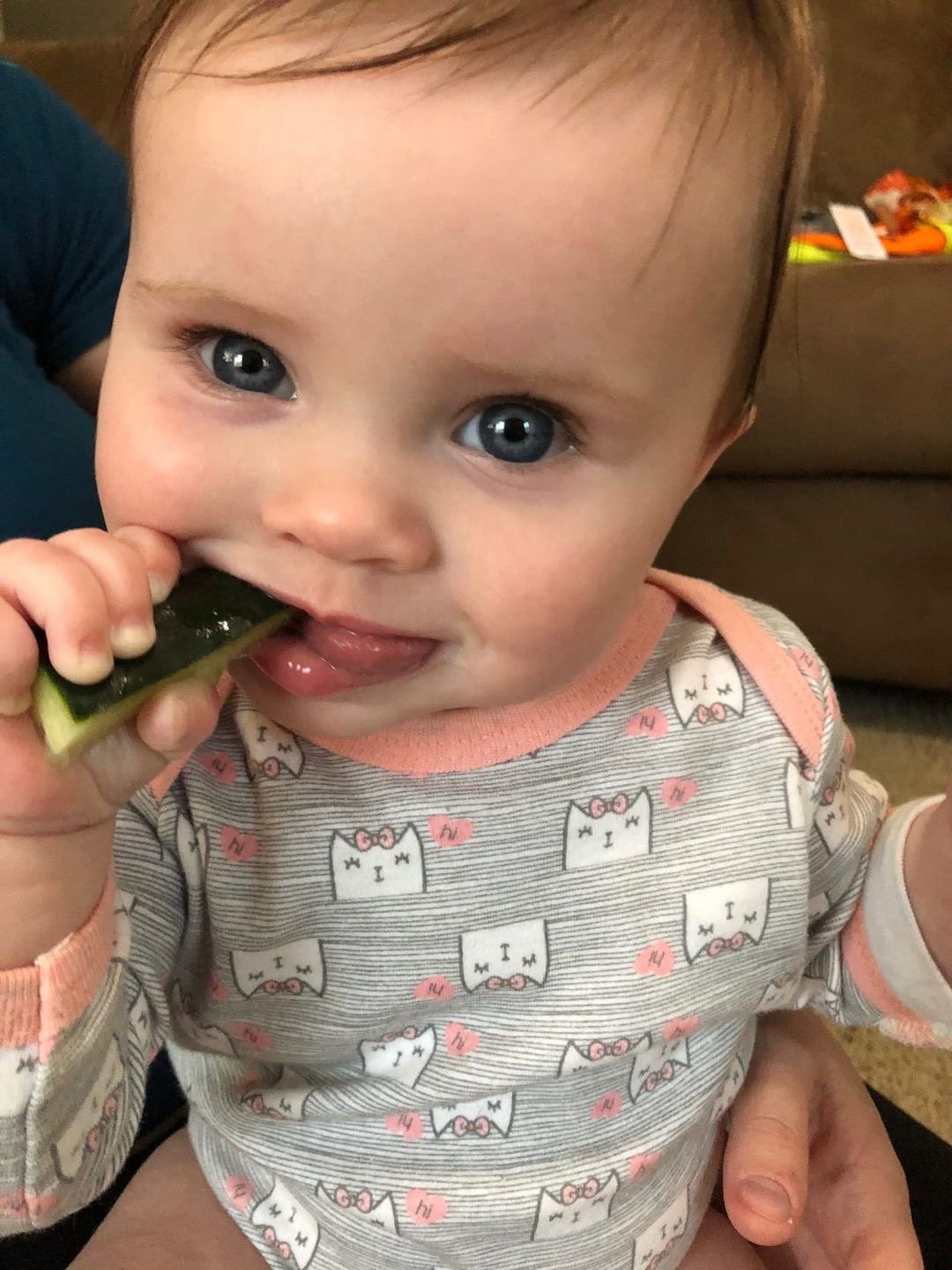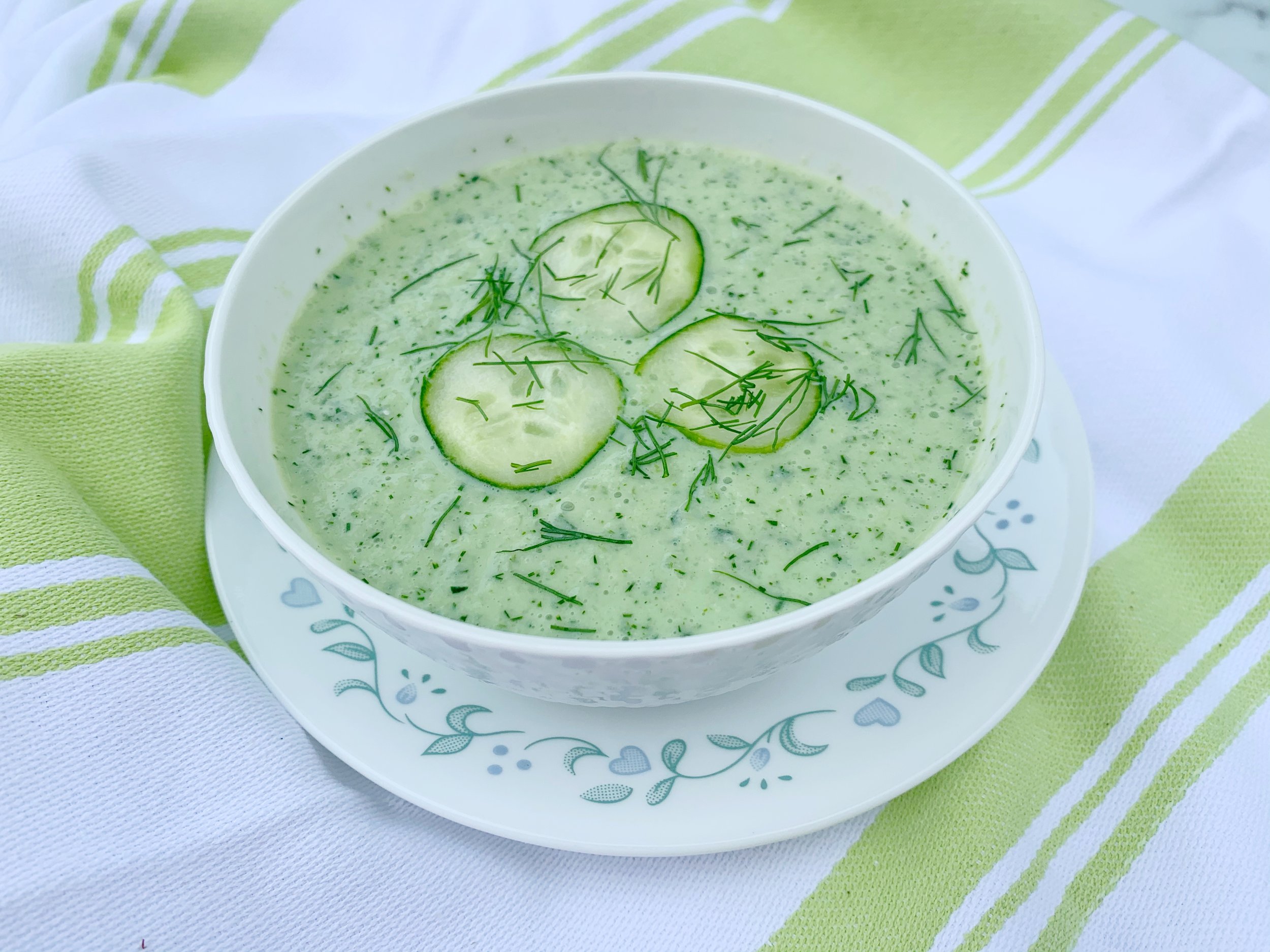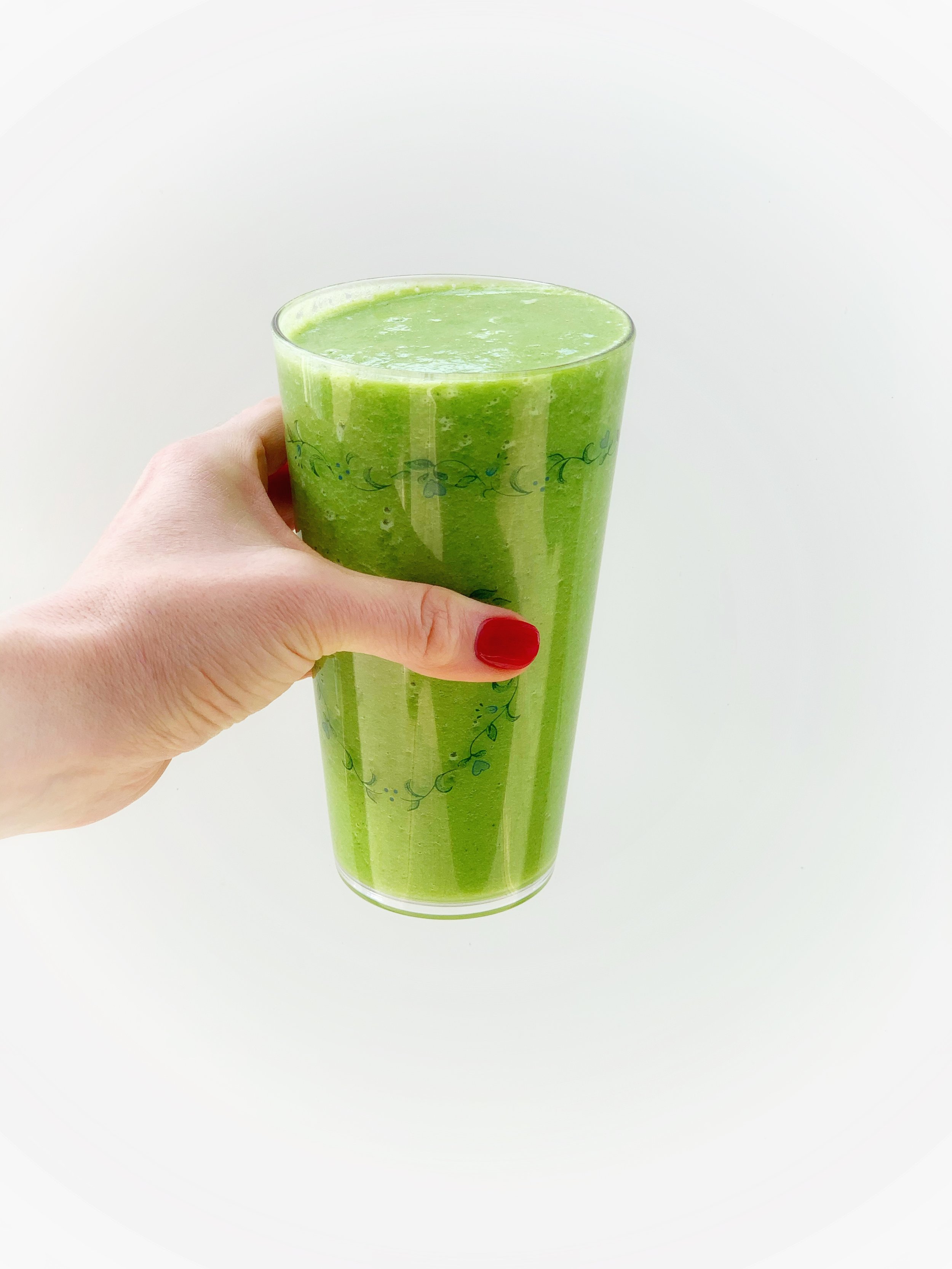BLW: How to Prepare Cucumber for Babies
A sweet 7-month-old munching on a cucumber spear! Big thanks to her parents for allowing me permission to share her!
Is your baby ready to start eating solids? It's an exciting time, but it can also be a little nerve-wracking.
Cucumbers are an excellent option if you're looking for produce that works well during baby-led weaning (BLW).
But are cucumbers for babies safe?
Like many foods offered during BLW, cucumbers need a bit of prep to make them the right size for 6 to 12-month-old babies transitioning to solids.
In this article, we go over the benefits of cucumbers for babies and learn how to prepare this refreshing vegetable during BLW.
Fun fact: cucumbers are technically a fruit!
Are Cucumbers Good for Babies?
Cucumbers are made up of 97% water, so they're an excellent source of hydration.
Although cucumbers aren't as nutrient-dense as other vegetables, they are a good source of vitamin K and do contain vitamin C, potassium, manganese, and magnesium.
And serving this refreshing veggie exposes babies to different flavors and textures which helps them learn to like more foods. One study found that acceptance of textures develops over time with exposure to a variety.
Baby-led weaning introduces solids to babies by allowing them to self-feed instead of being passively spoon-fed purees. Offering nutritious foods during infancy is an essential part of helping meet a child’s vitamin and mineral needs and produce is generally rich in nutrients. But offering fruits and vegetables regularly has other benefits as well, such as helping create healthy habits and taste preferences.
As a pediatric dietitian specializing in infant feeding, I’ve found that other benefits of serving cucumbers to babies include:
Chewing practice – chewing helps develop a baby's chewing skills, which can affect speech and the ability to accept different textures.
Finger food – cucumbers are a nutritious finger food for babies. Grasping sliced cucumbers doesn't require developed dexterity, so babies can easily self-feed cucumbers without getting frustrated.
Soothes gums – the soft, cool inside of this refreshing veggie provides teething relief for swollen gums when a baby is teething. Mouthing the cucumber is also good chewing practice.
Note: Food allergies to cucumbers are not common.
While cucumbers are not likely to cause an IgE-mediated allergic reaction, some people who are allergic to ragweed also experience mild allergic reactions to cucumbers (i.e., short-term itchiness and/or swelling around the mouth, throat, gums, nose, and eyes, a burning sensation in the mouth, etc.) due to Oral Allergy Syndrome (OAS).
Sometimes referred to as Pollen Food Allergy Syndrome, OAS is a generally non-life-threatening form of food allergy caused by cross-reactivity of allergens found in both pollen and some raw fruits and vegetables.
Can Babies Eat Cucumber Skin?
Cucumbers and other fruits and veggies, including apples, have a wax coating to prevent moisture loss and to keep them fresh longer. Don't worry. The waxy coating is edible.
Babies don't have the chewing skills or teeth needed to cut through cucumber peel until about 12 months, but that doesn’t mean the peel is useless. When left on a cucumber spear for 6-9 month-old babies, leaving the peel on can help improve grip and make it easier for the baby to hold and mouth with gums. When peeled, the cucumber flesh is easier for babies to eat, so whether to leave the peel on depends on your goals for the meal.
A perfect example of a happy 6.5 month-old baby girl chewing on a cucumber spear with a partial peel on it for grip! Thank you to her parents for permission to share.
In any case, the peel should be washed thoroughly before serving. Although cucumbers aren't a top pesticide-containing food, they're still exposed to chemicals and pesticides. The good news is that peeling is one of the most effective ways to reduce pesticide residue.
Foodsaftey.gov recommends washing all fruits and vegetables under running water before eating, peeling, or slicing. This helps prevent transferring bacteria to the knife, cutting board, or from the outside of the cucumber to the inside.
What about organic cucumbers? Cucumbers labeled 100% Certified Organic are grown without chemicals and pesticides. Both regular and certified organic cucumbers have bacteria from the soil they're grown in.
How to Prepare Cucumber for Baby-Led Weaning
Before introducing cucumbers as part of BLW, make sure that your baby has been exposed to other types of food first.
Start with something like avocado or banana so your baby can learn how to hold food with their hands and practice chewing with softer fruits and vegetables. Once they're comfortable, you can start introducing cucumbers and other fruits or vegetables.
Whether you're spoon feeding or following baby-led weaning, you'll need to prep cucumbers, so they're safe for a 6 month and 1-year-old to eat.
There are several types of cucumbers. English or seedless cucumbers have thin skin but are not as soft as regular cucumbers - my older kids enjoy these best because they love the crunchy texture. Large cucumbers need to be peeled and cut to a safe size for baby. I like these best for babies because the centers are soft enough for babies to eat.
How to Cut Cucumber for 6-Month-Olds
Baby-led weaning can begin around 6 months old when babies are ready for solid food.
It's best to serve long, thick spears of cucumbers to babies at 6 months old. They can hold it in their palms and bring it up to their mouths themselves. They'll most likely gum the spears, experience the flavor, find relief in the coolness of the cucumber on their gums, and suck out the juice.
First, peel the cucumber, then slice it into a long, thick spear and offer. There is no need to remove the seeds, which are small and soft.
Soft centers of cucumber spears, cut lengthwise for baby.
Supervise carefully and if your baby is somehow able to chomp off a piece, stay calm, lean them a bit forward and coach them to spit out the bite by role-modeling the process yourself.
Another alternative is to offer a “spear” of the soft seeded center of the cucumber which is generally easy for babies to mash down with gums and swallow.
If any of this worries you, you can always choose instead to shred or grate cucumber and add it into dips or purees for your baby.
How to Prepare Cucumber for 1 Year Old
Around 9-10 months old, most babies have more teeth and can chew some harder foods. And they can pick up small pieces of food with their newly developed pincer grasp.
Hard vegetables are still a top choking hazard, so you'll need to prep the cucumber. Still, you have more options at this stage of development. After you wash and peel the cucumber, you can prepare it in a couple of different ways.
Cut horizontally into thin slices about the size and thickness of a ruler
Cut into small chickpea-sized cubes
Shredded or grated
Larger cucumber spears for teething relief
Many one-year-olds can bite off large pieces when eating from a spear, so always be sure to supervise carefully during meals.
Tips to Reduce the Choking Risk
Supervise eating in case your little one bites off a large piece or if they’re mouth stuffing.
Never put your fingers into your baby’s mouth to remove a piece of food - this can cause the food to move further back into the baby’s mouth and into the windpipe.
Avoid distractions and keep mealtimes calm.
Ways to Serve Cucumbers for Babies
This high water-containing vegetable doesn't puree into a thick consistency, but there are other ways to cook with cucumber. Cucumbers are more versatile than you might think.
If you're unsure about serving hard veggies to your baby or looking for other ways to prepare cucumbers, here are a few of my favorites:
Grate cucumber into a tzatziki dip
Try cucumber yogurt soup (a great source of probiotics!)
Add grated cucumber to hummus and use it as a dip or spread on a cracker.
Make a green smoothie with cucumber – a great alternative to bitter green vegetables.
And if you're eating cucumbers yourself, have some ready for your little one, too—they may enjoy trying what you're eating!
What’s your favorite way to serve cucumber? Let me know how it went in the comments below.
If you’re getting ready to start your baby on solids, download my FREE Baby-Led Feeding Essential Checklist to make sure you have everything you need to get started. You might also want to check out my new online course for parents, based on my best-selling book which will walk you through the whole process of starting solids using a baby-led approach.
Alternatively, if your baby is almost ready to start solids and you’re looking for someone you trust to map out the entire first 12 weeks of your baby’s solid food feeding journey, check out my new Safe & Simple 12-Week Meal Plan! Over 30 recipes, weekly shopping lists, tons of balanced baby meals, a complete plan for top allergen introduction, & lots of guidance (with photos) on how to safely serve each food.
And if have a specific nutrition-related concern regarding your baby or child, book a session with me in my private practice and we’ll get to the bottom of it. Looking forward to meeting you!











